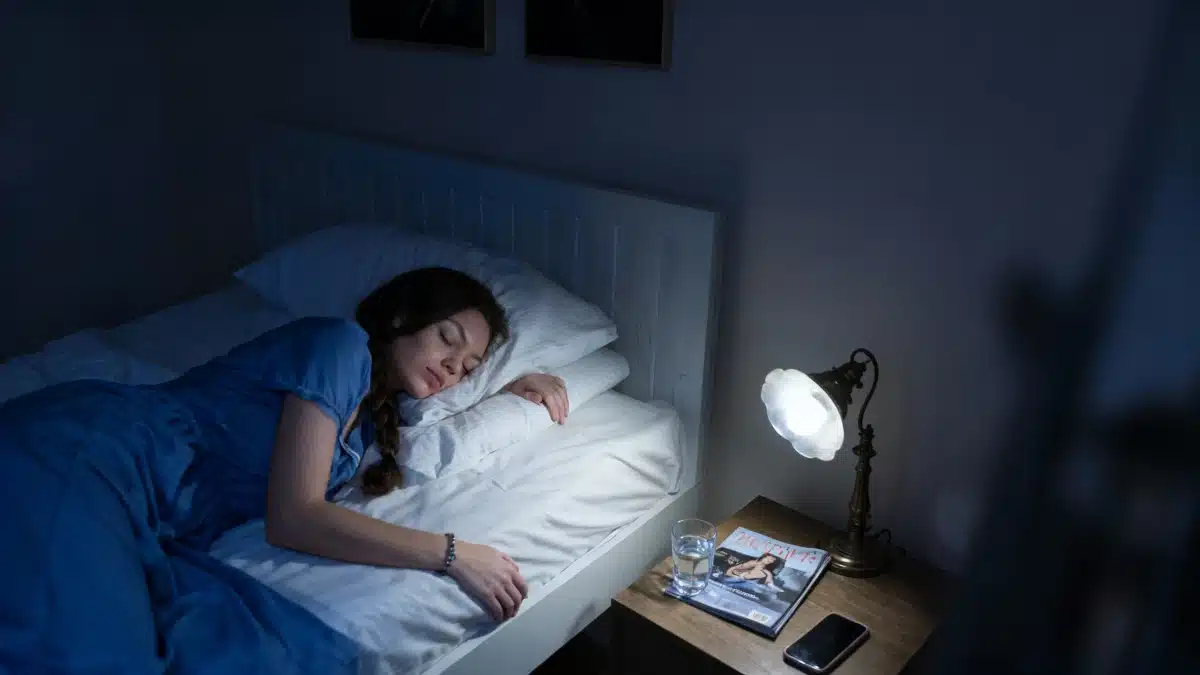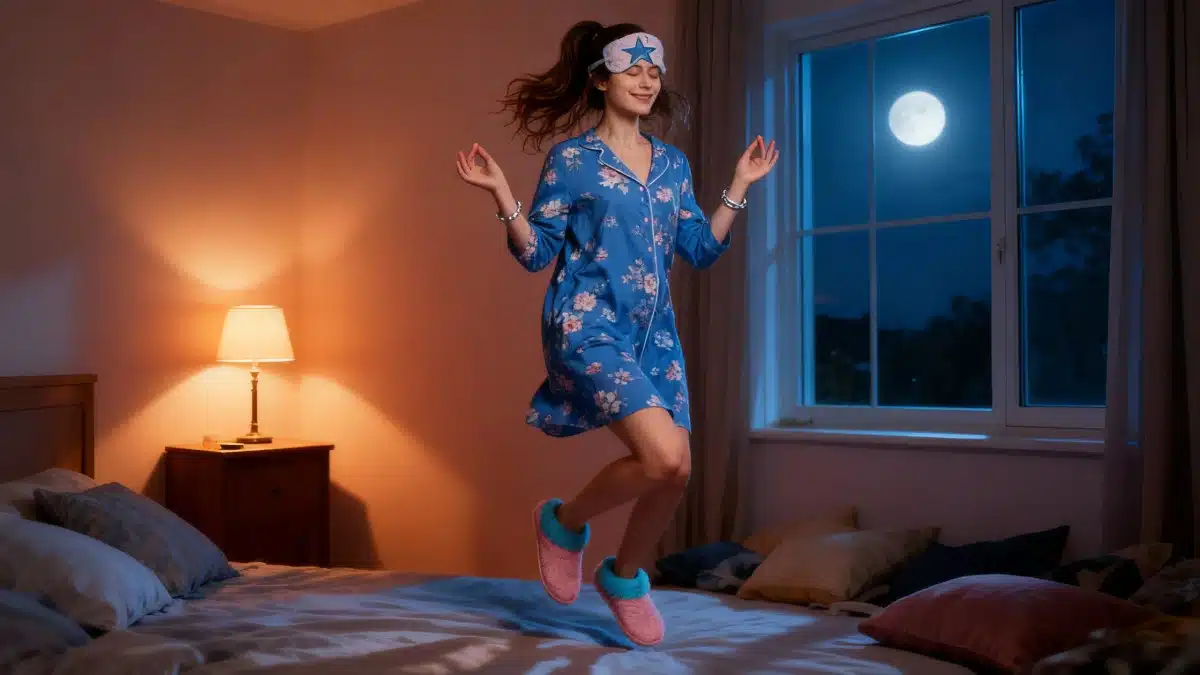The Mind That Never Sleeps
Rumination is often the true culprit keeping us awake at night. The mind loves to run marathons in the dark, replaying thoughts and worries when all we really want is rest. To help calm this mental chatter, Emily Kessler, an American meditation teacher based in New York, believes she’s found a miracle solution: the “house tour” method. She explains this simple trick in a TikTok video that’s already made waves.
Emily Kessler’s ‘House Tour’ Sleep Trick
So, what is the “house tour”? Put simply, it involves closing your eyes and picturing yourself walking through a house that doesn’t belong to you.
“When you’re trying to fall asleep at night, lying in your bed, take a deep breath and start to visualize a house. Not your own house, but a house you know well,”
Emily Kessler explains. For her, it’s always her grandmother’s house. The key is to really imagine yourself moving slowly, paying attention to every little detail outside, then making your way to the front door, opening it, entering, and wandering through each room, visualizing as many details as possible.
She encourages,
“You really have to imagine yourself walking slowly, noticing details outside, making your way to the door, opening it, entering, and then strolling through every room, imagining each detail,”
adds Kessler, who, incidentally, teaches meditation in New York.
According to her, the technique works to “distract the mind from all its busy thoughts” and thus makes falling asleep much easier. She even laughs,
“I’ve personally never made it to the second floor before falling asleep.”
Why Does Such a Simple Method Work?
So what’s the secret behind this seemingly magical approach? As Dr. Nicolas Neveux, psychiatrist and author of Pratiquer la Thérapie Interpersonnelle (TIP), explained to Le HuffPost, it’s actually “very common” for people to imagine scenarios at bedtime. He notes,
“When you fall asleep, you let your conscious mind rest and give space to your unconscious, which starts making associations and allows your imaginative side to express itself.”
Dr. Sylvie Royant Parola, a psychiatrist specializing in sleep, also confirms that visualization like this is a tried-and-true method:
“It’s true that it’s a technique that works. That is, as soon as you concentrate on something that distracts you from all the problems in your head, you can find calm.”
She shared this insight with French TV channel BFMTV.
Millions Are Trying It Out
Given how viral Emily’s video has become, it’s clear that people online are finding the method helpful too. Since its debut on TikTok in early August, the video has racked up over two million views. That’s potentially millions of people now picturing themselves exploring a house in their minds to help them fall asleep. Maybe in a few months, entire neighborhoods will exist solely in our collective bedtime imaginations.

John is a curious mind who loves to write about diverse topics. Passionate about sharing his thoughts and perspectives, he enjoys sparking conversations and encouraging discovery. For him, every subject is an invitation to discuss and learn.





